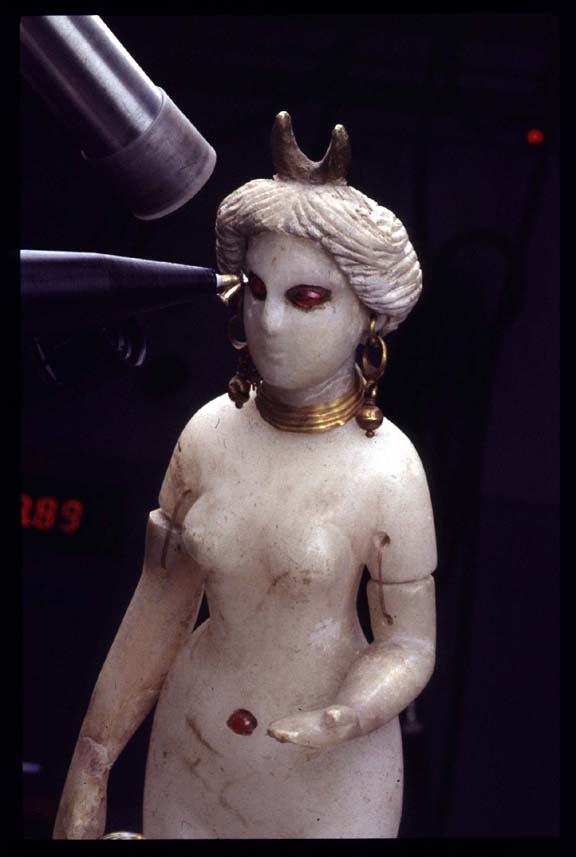Analysis of surface chemical elements to identify materials
The identification of raw materials employed, the manner in which they are mixed and the treatment applied, all these elements form part of the knowledge of an object of art. In the event of a doubt about its origin, these factors bring solid arguments to the authentication of artwork and its attribution to an artist or a workshop.
In archaeology, the identification of the raw material contributes to a better knowledge of a technical development of the distant past and offers the possibility to give an indirect dating by the similarity in composition of well dated objects.

Analysis of the rubies of the Goddess Ishtar
This Parthian statuette represents Ishtar, the Parthian goddess of love. The particle beam extracted from the accelerator AGLAE focuses on one of the red stones embedded in the eyes and the navel of the statue. The aim of the game is to identify the nature and origin of these coloured stones. The analysis by the PIXE method, shows that these red Rubis were mined in ancient times from a mine in Burma.
©LRMF
The most common method used at the research laboratory of the Louvre in France (LRMF) is the PIXE method. Very sensitive and specific, it allows analysing of the surface composition in detail, like an inlay, the letters of a parchment or the lines of a drawing.
For example, it was believed for a long time that the red inlays of a Parthian statue of the Louvre representing the Goddess Ishtar were made of coloured glass. These red inlays are positioned in the eye sockets and the navel of the statue. The identification of the minerals showed that they are in fact rubies. The PIXE spectrum of the major elements indicates the presence of aluminium and chromium, characteristics of natural ruby.
There has also been evidence of the use of several types of metal points in the drawings of Pisanello: Lead or silver-mercury alloy on a parchment or a paper without preparation; pure silver on treated paper prepared with a base of white bone or calcium carbonate.
A recent study has been dedicated to the identification of pigments used in the illumination of medieval manuscripts preserved in the National Library of France.